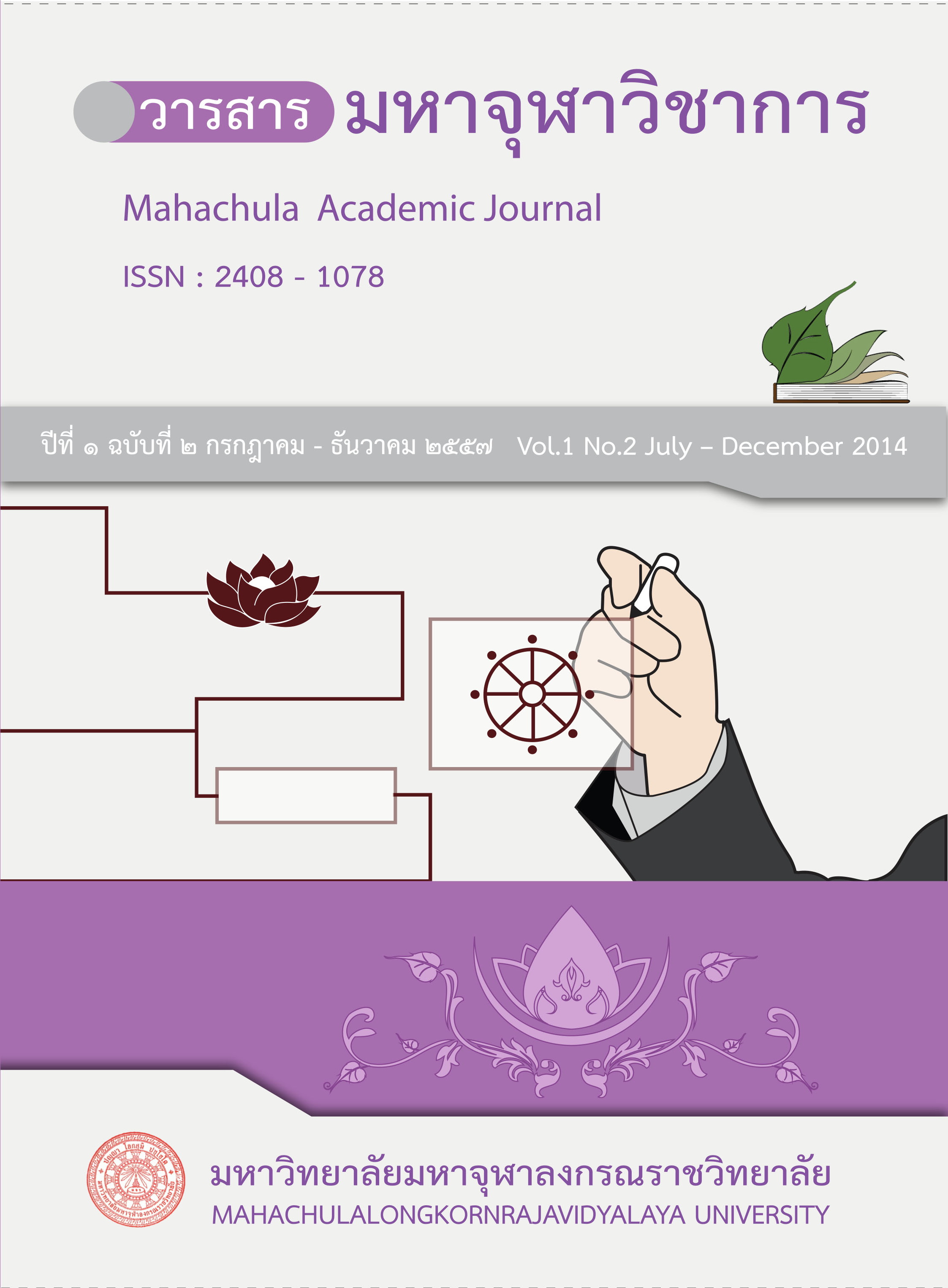Buddhist studies and education efficiency
Main Article Content
Abstract
Buddhist studies and education efficiency mean applying Buddhist teachings into classroom curriculum that will later bring about the ultimate learning objectives. This can help decrease and solve learners' problems when they are in class. Specifically speaking, learners may not be ready to study due to the present
environment which could affect their “concentration” and “consciousness” and make them unable to follow the learning and perception aspects. In bringing about the education efficiency through learning and perception, the basic 5 Buddhist methods that can control emotion are known as The 5 Aggregates (Standhas) which compose of Rūpa (Corporeality), Vedanā (sensation), Sañña (perception), Saṅkharā (volitional activities) and Viññaṇa (consciousness). When the mind is stirred by the uneasy condition, we can adjust it by controlling emotion, negative sensation, and negative equanimity sensation. The principal component of the integrated Buddhist methods to achieve education efficiency is solely concerned with Vedana. When the process of learning takes place, Vedana or sensation is inevitably intertwined. The sensation involved in education can be classified into 2 aspects of Vedana combined with lack of education efficiency and Vedana combined with education efficiency that can advocate the desirable achievement. The crucial variable in making that efficiency happen is to develop the “body and mind” aspect to reach the mentioned Buddhist teachings
Article Details
References
จักรแก้ว นามเมือง. เอกสารประกอบการสอนจิตวิทยาสำหรับครู. พะเยา: มหาวิทยาลัยมหาจุฬาลงกรณราชวิทยาลัย วิทยาเขตพะเยา, ๒๕๔๙.
พระธรรมปิฎก (ป.อ.ปยุตฺโต). พจนานุกรมพุทธศาสน์ฉบับประมวลศัพท์. กรุงเทพมหานคร: โรงพิมพ์มหาจุฬาลงกรณราชวิทยาลัย, ๒๕๔๖.
พระธรรมปิฎก (ป.อ.ปยุตฺโต). พุทธธรรม. กรุงเทพมหานคร: โรงพิมพ์มหาจุฬาลงกรณราชวิทยาลัย, ๒๕๔๓.
พระมหาสมบูรณ์ วุฑฺฒิกโร. บทความเรื่อง “แนวคิดเรื่องจิตเท่านั้นที่มีอยู่” ของพระพุทธศาสนา นิกายโยคาจาร” มหาวิทยาลัยมหาจุฬาลงกรณราชวิทยาลัย, ๒๕๔๘.
พูนทรัพย์ เกตุวีระพงศ์. จิตวิทยาสำหรับครู. แพร่: มหาวิทยาลัยมหาจุฬาลงกรณราชวิทยาลัย วิทยาเขตแพร่, ๒๕๕๕.
มหาจุฬาลงกรณราชวิทยาลัย. พระไตรปิฏกภาษาไทยฉบับมหาจุฬาลงกรณราชวิทยาลัย. กรุงเทพมหานคร: โรงพิมพ์มหาจุฬาลงกรณราชวิทยาลัย, ๒๕๓๙.
ราชบัณฑิตยสถาน. พจนานุกรมศัพท์ศาสนาสากล อังกฤษไทย. กรุงเทพมหานคร: อรุณการพิมพ์, ๒๕๔๒.
วินัย อัศว์วิเศษศิวะกุล. ศึกษาศาสตร์ตามแนวพุทธศาสตร์. กรุงเทพมหานคร: กราฟฟิกอาร์ต, ๒๕๒๖.
วีรยุทธ วิเชียรโชติ และนวลเพ็ญ วิเชียรโชติ. ศึกษาศาสตร์ตามแนวพุทธศาสตร์. กรุงเทพมหานคร: กราฟฟิคอาร์ต, ๒๕๒๖.
สมเด็จพระพุฒาจารย์ (อาจ อาสภมหาเถร). คัมภีร์วิสุทธิมรรค ๑๐๐ ปี สมเด็จพระพุฒาจารย์ (อาจ อาสภมหาเถร). กรุงเทพมหานคร: บริษัทประยูรวงศ์พริ้นติ้งจำกัด, ๒๕๔๖.


